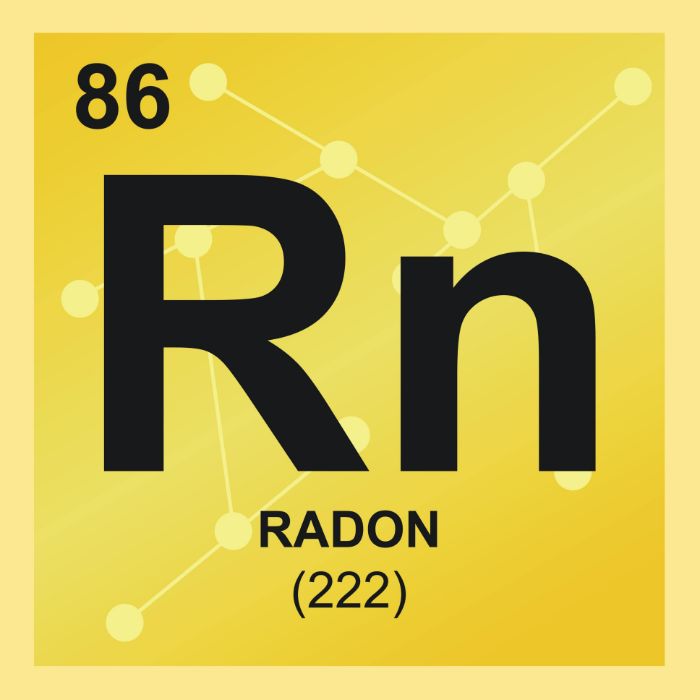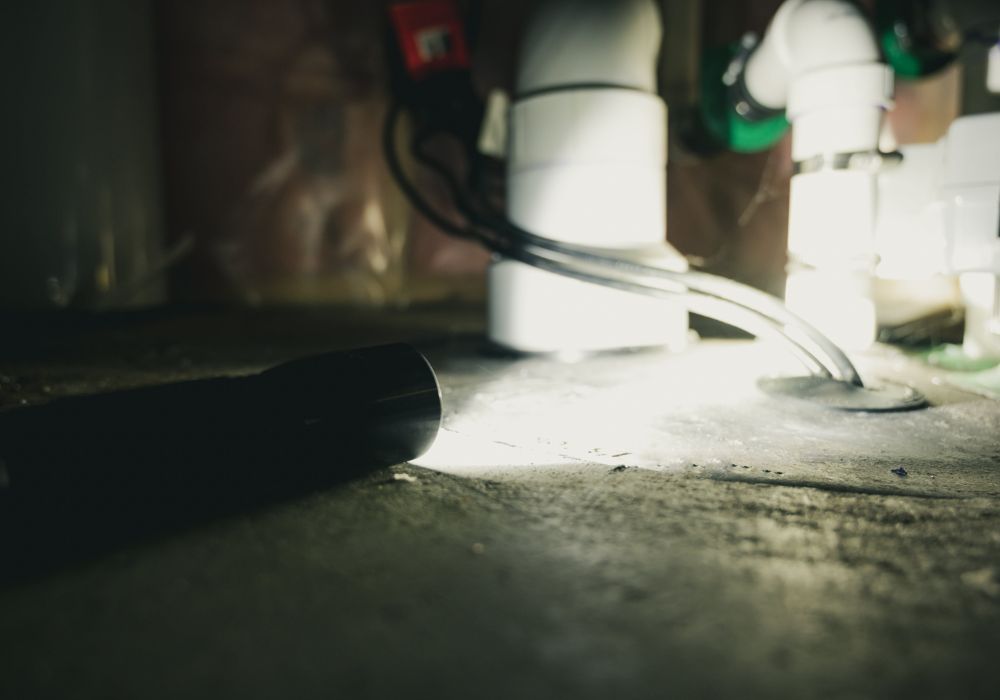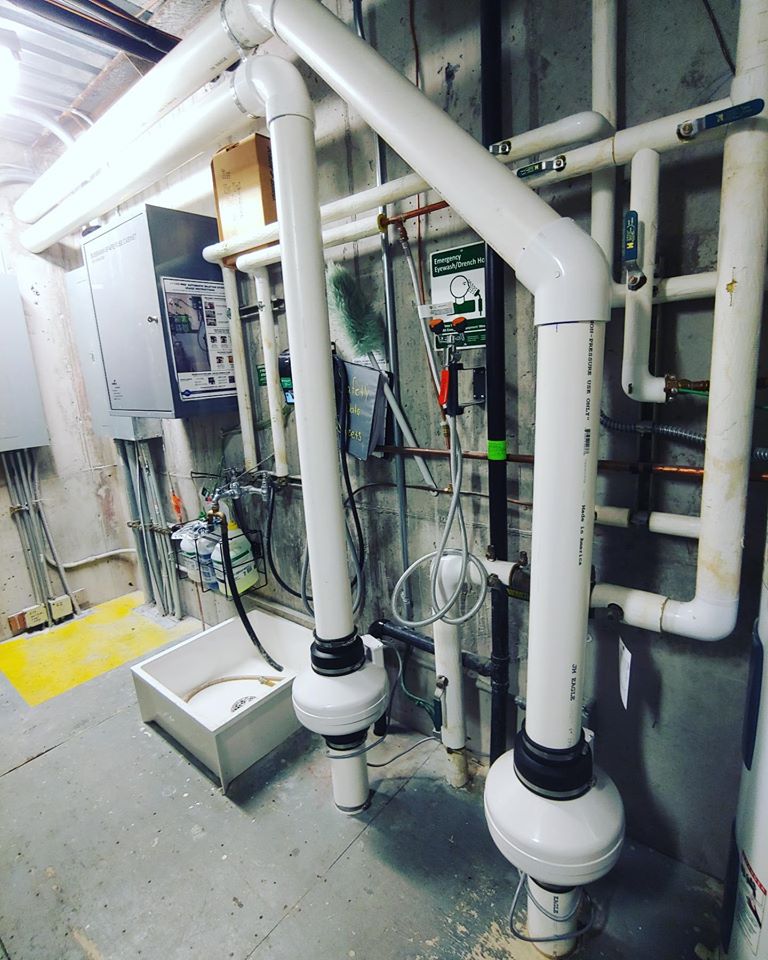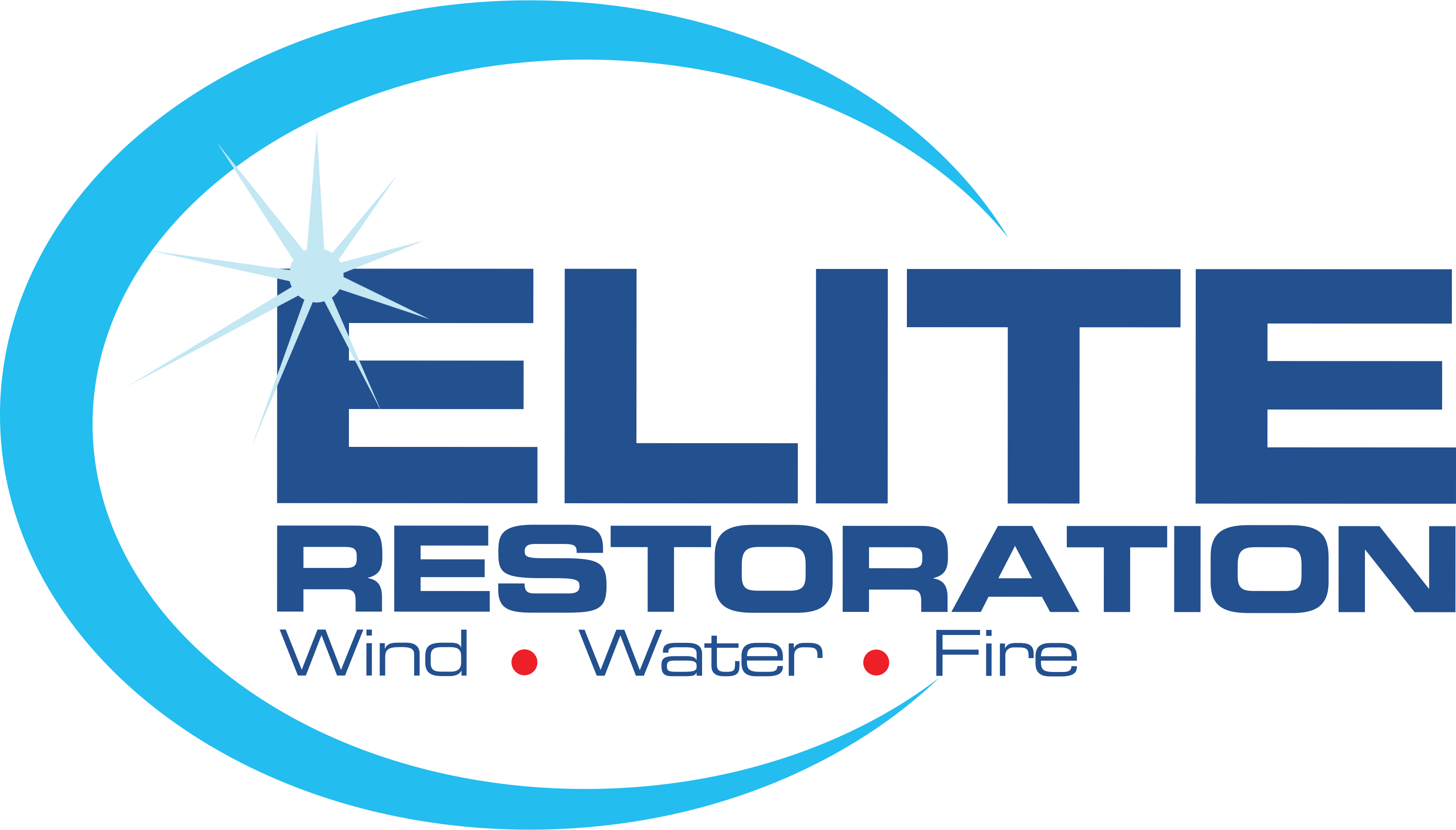RADON TESTING & MITIGATION
Let Elite Restoration test your home for RadonWHAT IS RADON (Rn)?
Radon is a chemically inert gas, meaning it will not combine with other gasses or chemicals. Radon, also seen as Rn on the Periodical Table of Elements, is a naturally occurring gas that is colorless, odorless and tasteless. It is slightly heavier than air, so Radon tends to affect the lower parts of the home. Even so, Radon can be detected on upper levels of the home in certain instances. It is the second leading cause of lung cancer in the world, behind cigarette smoke. As a carcinogenic, it is very important to know what levels of radon you are being exposed to over long periods of time.
Radon was discovered by an English physicist, back in 1899. As a byproduct of Uranium, Radon is measured to dictate possible locations for Uranium mines. A family who has radon levels of 4 pCi/L is exposed to approximately 35 times as much radiation as the Nuclear Regulatory Commission would allow, if that family was standing next to the fence of a radioactive waste site. An elementary student that spends 8 hours per day and 180 days per year in a classroom, with 4 pCi/L, will receive nearly 10 times as much radiation as the Nuclear Regulatory Commission allows at the edge of a nuclear power plant.


WHERE DOES RADON COME FROM?
Over about 4.5 billion years, Uranium decays and eventually becomes Radon. The radon we have around in the present day, started its journey long before humans inhabited the earth. During the decay process, Uranium, is broke down in the soil, water and air.
HOW DOES RADON ENTER YOUR HOME?
Your home provides a natural vacuum to the soil beneath you. It does not matter if you have a crawlspace, slab on grade, or a basement. Radon can enter your home from many areas. The most common entry points are cracks in the slab or foundation, ventilation ducts below the slab, leaks in crawlspace furnaces, and ducting and plumbing or electrical lines running from below the home. Radon is a lot like water and flows in the path of least resistance. Upper levels can be affected by plumbing lines or electrical running through the home and even some building materials such as granite countertops or floors.
Radon can also enter your home through well water. Because wells are deep underground and enclosed from fresh air, Radon is trapped inside the well water. It is introduced into the home through sinks and showers.
What is a safe level of radon?
There is no such thing as a safe level of Radon. The levels of Radon are measured in pCi/L (Pico curies per liter of air). A curie is the measurement of radioactivity in one gram of radium. The lower the pCi/L in a home, the lower the risk of health problems. The Environmental Protection Agency’s (EPA) action level for mitigation is a 4.0pCi/L. The World Health Organization (WHO), suggests a lower number of no more than 2.7pCi/L.

WHAT ARE THE HEALTH RISKS OF RADON?
Radon itself is not the cause of most health risks. So, why is it a risk to me? The main risks associated with radon come from the decay products. After about 3.8 days, radon breaks down into Polonium. During that change to Polonium, an alpha particle is released. Alpha particles are positively charged atoms that cannot penetrate the human skin; but when inhaled, these particles strike the tissue lining the inside of your lungs, altering or destroying parts of your DNA. Destruction of your DNA is not a huge concern, but mutations can lead to cancer and other health effects. The EPA suggests that there about 21,000 deaths a year related to Radon caused lung cancer. About 2,900 deaths out of that 21,000 were nonsmokers.

RADON GAS IN YOUR HOME
How do I reduce Radon in a home, and what should I expect during Radon Mitigation?
Elite Restoration offers Radon Testing services in Twin Falls, Boise, Bellevue, Pocatello, Meridian, and Burley, Idaho. There are many ways to reduce radon in your home. Some applications are only used in special instances. We will discuss a couple of the more commonly used applications below.
Sub-Slab Decompression Systems/Slab System – This system is installed in the slab on grade homes. To install this system, we locate an area home where we can remove a section of concrete and dig a hole about 2 feet deep. We then install a PVC pipe and drill holes below the slab line on the pipe. Once the holes have been drilled in the pipe, we fill the hole with gravel and re-pour the cement. Once the cement has been poured, we route the pipe to the exterior of the home, where a fan is placed to create suction beneath the slab. An exhaust is then ran from the fan, to the eave of the roof. A catch is placed inside the pipe, to stop any unwanted critters or debris from entering the fan. The exhaust shall be placed in a vertical position, pushing radon away from the home, ground and other homes in the area.
Sub-Membrane Decompression System/Crawl Systems – This system is the most common. To install this system, we must snake perforated drainpipe through the crawl space. A 6-mil membrane is then placed over the top of the pipes. Most times, multiple pieces of 6 mil poly membrane is needed to cover the entirety of the crawlspace. The different pieces are then “seamed” together using an all-weather vinyl tape, to create a single membrane. Once the pieces are “seamed” together, the entire perimeter must be attached to the foundation. To do this, we use a strong foundation adhesive. The pipe under the membrane is routed outside, through either the foundation or an exterior wall. There, the pipe is attached to a specially designed Radon fan, to create a vacuum under the membrane and soil. Another schedule 40 PVC pipe is placed on the exhaust side of the fan and routed along the exterior wall, above the eave of the roof. A catch is placed inside the pipe to stop any unwanted critters or debris from entering the fan.
Not every system will be the same. We also offer many accessories to route moisture away from the fan, as well as suppressors to reduce the noise from the exhaust. Fan covers are also available to help protect the fan. Chases can be built around the pipe to hide the system, or the PVC can be painted to match the color of the home.
Radon in well water is a whole different ball game and is usually mitigated by a clean water specialist. The best way to reduce radon in water is aeration and filtration. A licensed water specialist will install an aeration unit in the home, between the well and the main water line going into your home. In many cases, Radon in water is much more concentrated than in the air but has little to no affect on the human body. What does affect us, is when the Radon inside the water escapes into the air and we breathe it in. Drinking water with radon in it, is much safer than breathing it in, according to most studies. For every 1000pCi/L recorded inside a water sample, it is safe to assume that about 1pCi/L escapes into the air.
How do I know if I’m being exposed to radon?
Who is affected by radon?
How long does it take for radon to pose a health risk?
How do I test for radon?
A tester should be placed somewhere in the home for a minimum of 48 hours. The location of the tester is dependent on the situation. In some cases, a person might want to know exactly how much radon they are being exposed to on a normal basis. In other cases, the potential of Radon exposure is measured. You can test for radon specifically, or test for the decay products. A short-term radon test will give the potential of Radon, and a long-term test will give you a better understanding of the exposure of Radon.
When it comes to Radon in water, a water sample is taken from a kitchen or bathroom faucet. It is then sent to a lab to be analyzed and results are usually back within 7 business days.
What kind of radon test should I have done?
There are many different types of radon tests that you can choose from. Your choice should be dependent on the situation. In a real estate transaction, a short-term test (48-96 hours) should be conducted. This can be done with either a charcoal-based testing kit, or a Continuous Radon Monitor (CRM). A charcoal test kit must be sent off to a lab to be read and analyzed. It could take a week for you or the radon professional to receive the test results. For faster results, a Continuous Radon Monitor can be used. These testers can be pricey and are not readily available to consumers. The easiest way to perform this test is to hire a professional. These results will show Radon levels, Barometric Pressures, Temperatures and are also equiped with tampering notices. These results can be read almost immediately and present a nice report to file for future needs.
For a more accurate representation of exposure, a long-term test (91 days-1 year) should be conducted. Long term tests can be conducted with a Continuous Radon Monitor (CRM) or with passive devices such as an Alpha Track Detector. Using a CRM for a long-term test can be very expensive but will give the best results. An Alpha Track Detector can be set or hung in a house for a longer period and are non-invasive to the occupants. Elite Restoration offers Radon Testing services in Twin Falls, Boise, Bellevue, Pocatello, Meridian, and Burley, Idaho.
What should I expect during a radon test?
If you are testing for a real-estate transaction, the tester will be placed in the lowest possible livable area of the home for a short-term test. This means if there is any possibility of someone turning an area into a living room, bedroom, or a space where occupants could spend a good amount of time in the future, that is where you should have a test conducted. The tester should be between 3 to 6 feet above the ground and away from any other objects in the room. A homeowner can choose to perform a short-term test outside of a real-estate transaction, in this case the homeowner can choose to test in the lowest livable area of the home, or in the lowest possible living area of the home. When a short-term test is being conducted, closed home conditions must occur for accurate results. This includes closing all windows and exterior doors 12 hours prior to testing and keeping them shut for the duration of the test. You may enter the home as normal, but doors should not be left open for more than a few minutes at a time. Any ceiling fans or bathroom ventilation fans should be left off. Fireplaces can also cause a high reading, so it is recommended to limit the use of fireplaces.
During a long-term test, homeowners may operate inside their home as normal. No closed home conditions must occur. After 91 days the test can be taken down and sent to a lab. The longer the test is active, the more accurate the results will be.
What radon testing device do we use?
Why is it so important to have a certified Radon professional test and mitigate my home, it doesn’t seem that hard?
Learn more about the services offered by Elite Restoration
Ready about the services offered by Elite Restoration!

